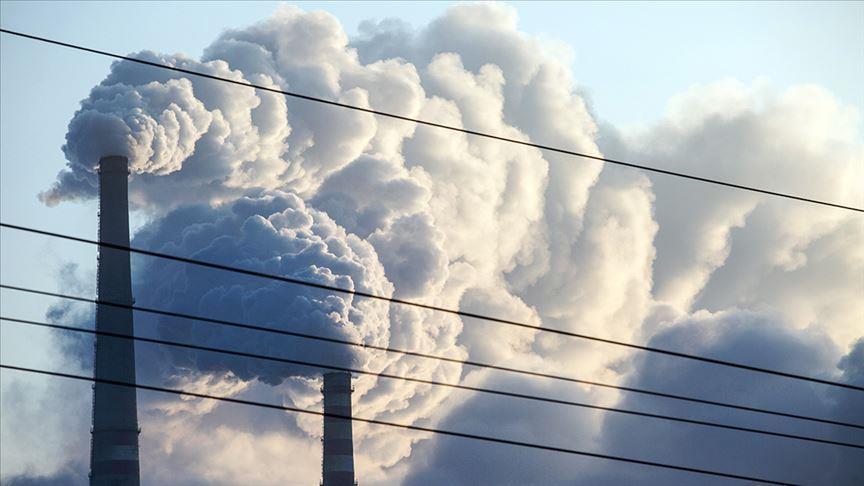The downward trend in global carbon emissions due to lockdowns in a large part of the world needs to enduringly continue to limit global warming below 1.5 degrees Celsius.
According to an analysis by Carbon Brief, the pandemic, which reduced road transportation, air traffic and power generation, could cause 2 billion tons of emissions cuts this year, corresponding to 5.5% of global total emissions in 2019.
As a result, the coronavirus crisis could trigger the largest annual fall ever in carbon emissions in 2020, more than during any previous economic crisis or period of war, the analysis showed.
"However, in and of itself, a reduction this year in emissions because of COVID-19 does not mean much. If you’ve been throwing a brick onto a pile every day for a hundred years and then you pause for a month, you do not make much difference to the pile," Robbie Andrew, a senior researcher at Norway-based institute for interdisciplinary climate research CICERO Center for International Climate Research told Anadolu Agency.
"The question is not about the reduction this year, but what the future consequences of all the shocks and changes to society and economy this year will have on emissions in the future," he noted.
Andrew said that any reduction in emissions this year would be a result of constraints on normal activity rather than climate policy.
"What this means is that when those constraints are removed, one might expect emissions simply to return to normal and follow the same trend, eventually," he stated.
- Fight against climate change is a marathon, not a sprint
According to the Carbon Brief analysis, the largest annual reduction to date was the 845 million tons of CO2 fall in 1944-45 at the end of the World War II while the carbon emissions drop after the 2008 financial crisis was 440 million tons.
International Energy Agency data showed that although emissions declined by 400 million tonnes in 2009, they rebounded by 1.7 billion tons in 2010 - the sharpest upswing in history, driven mainly by developing Asia.
Taking into account the United Nations' data, Andrew said the world needs a 7.6% decline per year for a full decade with continued declines after that to meet a 1.5 degrees Celsius limitation.
"The consequences of intentionally declining emissions can be very different for the economy than those of unintentionally declining emissions, as we are seeing now. If this is the intention, then it can be driven by shifting investments, such that jobs move from, say, coal to solar," he said.
Andrew added: "Rather than cutting economic activity, we need to shift economic activity."
Dave Jones, an electricity analyst at London-based climate think tank EMBER, drew attention to the importance of economic stimulus packages to recover from the impacts of COVID-19.
"The aim of meeting 1.5 degrees Celsius is a marathon, not a sprint. Thus, it makes a big difference only when there is an incremental drop year on year," he said.
Jones said that among the uncertainty, there is an opportunity to change the way people live and urged that people learn lessons from the 2008 financial crisis.
"A number of countries are not exactly clear how they are going to bounce back or how they will spend their money from future stimulus packages," he explained.
- Lessons to be drawn from the 2008 crisis
IEA's head Fatih Birol in a recent article that he wrote listed key lessons to draw from the previous crisis.
He suggested that given the size of today's economic shock, the push for clean energy investment would need to be conducted on a major scale.
"Action is also required to address financial weakness in key parts of the energy industry. After the 2008 crisis, a combination of weak demand and low prices put a serious strain on the balance sheets of energy utilities and key manufacturers. The financial weakness already caused by the Covid-19 crisis in the utility sector justifies a similarly proactive financial stance this time around," Birol wrote.
He also advised that through accelerating wind and solar PV, both these forms of energy could be pillars of a post-pandemic stimulus while making a vital contribution in efforts to accelerate a clean energy transition along with advancing battery and hydrogen electrolyzer technologies.
Birol also recommended that policymakers focus on projects that are relatively simple to implement but where access to financing is constrained, citing the example of energy efficiency projects in the residential and municipal sectors.
"Yet the current situation does have some key differences from the one faced by governments in 2008 and 2009. The economic crisis is far more severe, and the decarbonization challenge is even more urgent," he said.
Birol wrote that once the immediate health crisis is over, the most important task facing the energy world is in planning for a recovery that is set to achieve maximum economic impact by creating large numbers of jobs and which results in a much cleaner and more resilient energy systems.
By Nuran Erkul Kaya
Anadolu Agency
energy@aa.com.tr


